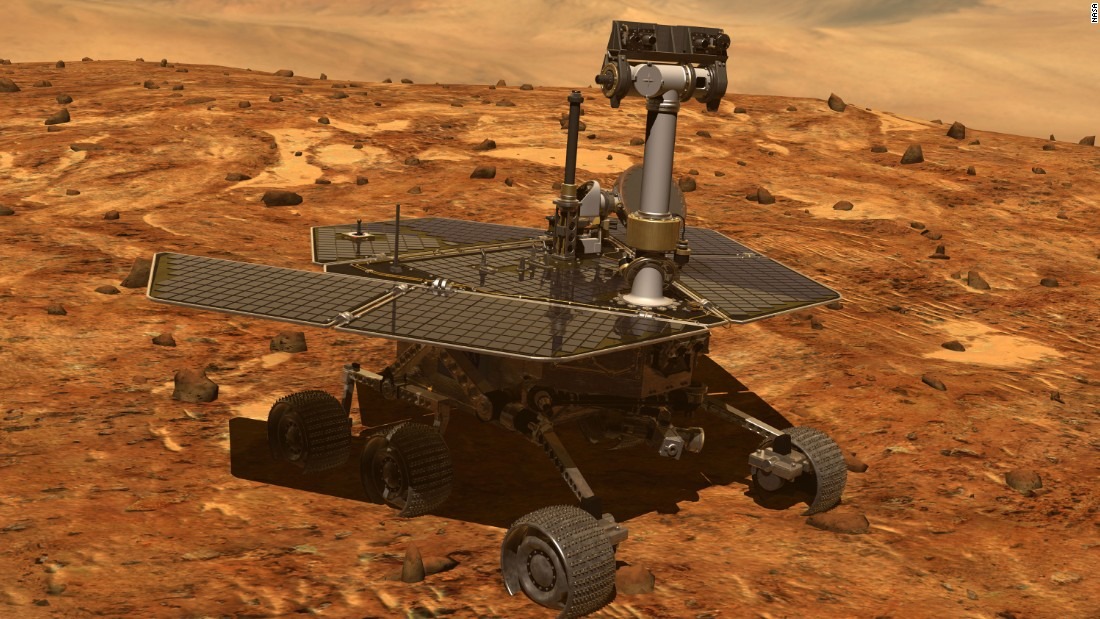Death of NASA’s Mars rover Opportunity goes viral
3 min read
CNN
By OLIVIA LEHMAN
Staff Writer
The last image transmitted by NASA’s Mars rover Opportunity looks to be a grainy, streaked photo of the night sky. It is magical, with beams of light shooting up from the surface of the red planet. It transfixes, as does the entire nature of Opportunity. While it looks beautiful, the streaks foreshadow the end. The photo is supposed to portray a region of Mars called Perseverance Valley. Instead, the static shows the deadly dust storm that finally put an end to Opportunity’s long mission, the longest mission of any space rover to this day.
Opportunity— affectionately called Oppy—landed on Mars on Jan. 25, 2004. It was only supposed to last 90 Martian days (about 87 Earth days) and instead lasted 5,111 Earth days. Its mission was incredibly successful. According to Forbes, Oppy traveled over 28 miles and took 217,000 images over that time, many of which gave key insights to what Mars was like in the distant and not-so-distant past.
“My battery is low and it’s getting dark.” In the few days since Oppy’s death, these imagined last words have gone viral. Memes, art, and a barrage of tweets (#ThanksOppy) followed the announcement by NASA of the rover’s death. Someone even got a tattoo of the rover’s final words. The loss of Oppy had a clear and maybe surprisingly profound impact on people, as if they lost a friend.
Many students on campus have been mourning Oppy, both online and offline.
“The mars rover was the sweetest lil colonizer the human race ever produced,” freshman Aliza Haskal tweeted, a funny yet melancholy and succinct expression of this loss.
The internet was abuzz with similar bittersweet descriptions as Haskal’s, of the rover as sweet, heroic, and even lonely.
Senior Avery Vanden Berghe expressed their grief as well by commenting, “He did a good job, we’ll miss him,” when asked about the death of Opportunity.
NASA officials showed how they too were both celebrating the magnificent life and mourning the death of the rover. The team behind the project, the Jet Propulsion Laboratory, gave their own send off to Oppy, transmitting a final message of Billie Holliday’s “I’ll be Seeing You.”
The multitude of responses works to personify Opportunity into a sort of lovable, noble hero rather than a robot. Even portraying the battery failure, the pummeling of dust and the subsequent loss of connection to NASA as a death humanizes the machine. This attachment to an inanimate but personified object could be a great tool for the future funding and success of NASA’s projects. It can also be a source of inspiration.
In fact, many scientists’ lives have been changed by the project. In an article by Interest Engineering, deputy project scientist for the Mars Exploration Rover (MER) Abigail Fraeman said “It was those first images from Opportunity that inspired me to become a planetary scientist.” In this way, the namesake and mission of the rover— Opportunity— lives on. The groundbreaking rover will continue to inspire and change the nature of space exploration for years and years to come.











